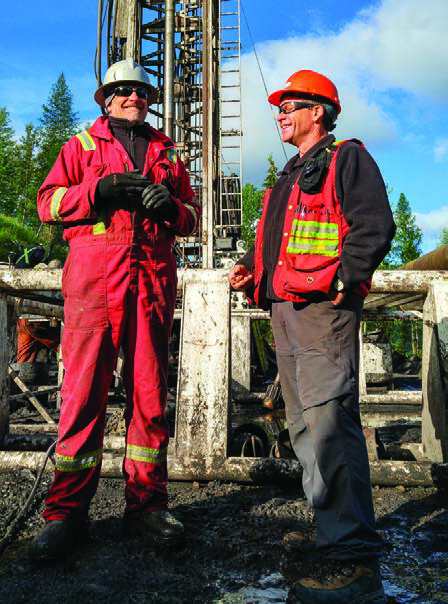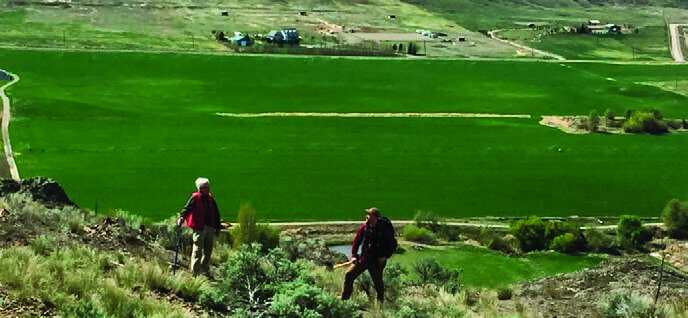In a province that is as large and diverse as British Columbia, it’s natural that opinions on most topics – including mineral exploration and development – will be diverse too.
What the average person in Oak Bay or Yaletown thinks about a new mine or pipeline will be very different from what’s going through the head of somebody who lives in the northwestern corner of British Columbia or in the Kootenays in southeastern B.C.
As the May 9 election approaches, Mineral Exploration wanted to know what’s on the mind of voters who live in the parts of the province that are most dependent on resource development. We talked to three well-connected observers of local politics in four provincial constituencies: KamloopsNorth Thompson and Kamloops-South Thompson, Stikine and Kootenay East. We asked each of them what the hot-button issues are in their respective constituencies and whether mineral exploration and mine development is important to their fellow voters.
The following interviews have been condensed and edited for clarity.
Stikine
Maria Ryder
District of Stewart councillor for 2.5 years, chief of the volunteer fire department and 25-year Stewart resident
The main projects in the Stewart region are Brucejack (Pretium Resources Inc.), the Premier Mine (Ascot Resources Ltd.), Red Mountain (IDM Mining Ltd.) and the Red Chris Mine (Imperial Metals).
Along with Terrace and Kitimat, Stewart is one of the largest communities in the district. We are growing in population, especially in the summer, when workers and their families descend on the town, drawn by mineral exploration and hydro projects and by Stewart’s two ports.

It’s very different here from urban British Columbia, and the people from down south who come up here to work find out just how different it is. And some of them discover how different some of our opinions and concerns are from theirs.
Because we get a lot of snow in the winter, much of the employment in Stewart is seasonal and the people who live here adjust their lives accordingly. Every year between March and November we’re busy, and between November and March things are pretty slow. But we’re used to it and we adjust.
The main election issue here is sustainable job creation through industrial development. We want jobs that stay and that provide stability to Stewart.
Kootenay East
Lois Halko
District of Sparwood second-term councillor and former mayor, born and raised in Sparwood

The main economic drivers of the region are the mining of metallurgical coal, which is B.C.’s single biggest export, and the activities of the local suppliers to the coal industry.
There are five Teck [Teck Coal Limited] metallurgical coal mines in the region: Coal Mountain, Elkview, Fording River, Greenhills and Line Creek. In addition, there are four mining companies that are interested in developing mines in the Elk Valley area: CanAus Coal Ltd., Centermount Coal Ltd., NWP Coal Canada Ltd. and Riversdale Resources Limited.
The five Teck mines have a total of 3,600 full-time employees, of whom 2,400 live in four communities in the Elk Valley area.
Because it is used to make steel, and because steel is such an essential product in everyone’s life, metallurgical coal should be recognized as a critical resource. It’s certainly critical to the people who live in Sparwood.
Teck has earned its social licence to continue mining here. The public has accepted the company’s efforts to mitigate any of the effects of coal mining, such as contaminants leaching into the water supply. Teck has done a lot of work to reduce the problem.

At the same time, we know that we need to diversify our economy. It’s something the local municipalities talk about a lot. The Sparwood regional economy is one of the least diversified in the province, which has made us very vulnerable to a cycle of boom and bust. The region has lots more to offer than just coal deposits, and we’re trying to leverage our mountains and natural beauty to build a thriving tourist industry.
Kamloops-North Thompson and Kamloops-South Thompson
Ryan Scorgie
President of the Kamloops Chamber of Commerce
The Kamloops Chamber of Commerce and its 850 members take a great deal of interest in all kinds of resource development, including mineral development in Kamloops-North Thompson and Kamloops-South Thompson.
The main mineral projects in the area are the Ajax Project (KGHM International Ltd.), the New Afton Mine (New Gold Inc.) and Highland Valley Copper (Teck Resources Limited).
Opinions about resource development are mixed in Kamloops. Most of the working people here are for it, but many of the academics at Thompson Rivers University are against, so the Chamber of Commerce hears both sides of the argument. Our position is that if a project goes through the appropriate review process and passes it, then we support it.
In fact, the Chamber thinks process is so important that our Policy Development Committee developed a policy regarding resource development in 2016 called Supporting Canada’s Responsible Resource Development.
The policy statement is more important than its brevity might indicate, because it was adopted provincially just a few months after it was written.
The committee writes, in part, “The Chamber believes that it is critical that B.C. maintains its reputation as a jurisdiction open to investment. Achieving the investments needed to ensure Canada’s competitiveness will require an efficient regulatory review process that ensures continued health and environmental protection of Canadians while generating jobs, economic growth and prosperity.
“A streamlined process will encourage investment by providing businesses with a clear and predictable process to protect the environment while making the best use of limited government resources.
“Inefficient and unpredictable processes may turn away potential investors and prevent businesses from being able to make informed location and logistic decisions. For example, the World Economic Forum has cited inefficient government bureaucracy as one of the biggest impediments to improving Canada’s economic competitiveness.
“We need to make sure that the regulatory review process is efficient, has a clear scope, reasonable timelines, and the flexibility to address unforeseen circumstances.”
